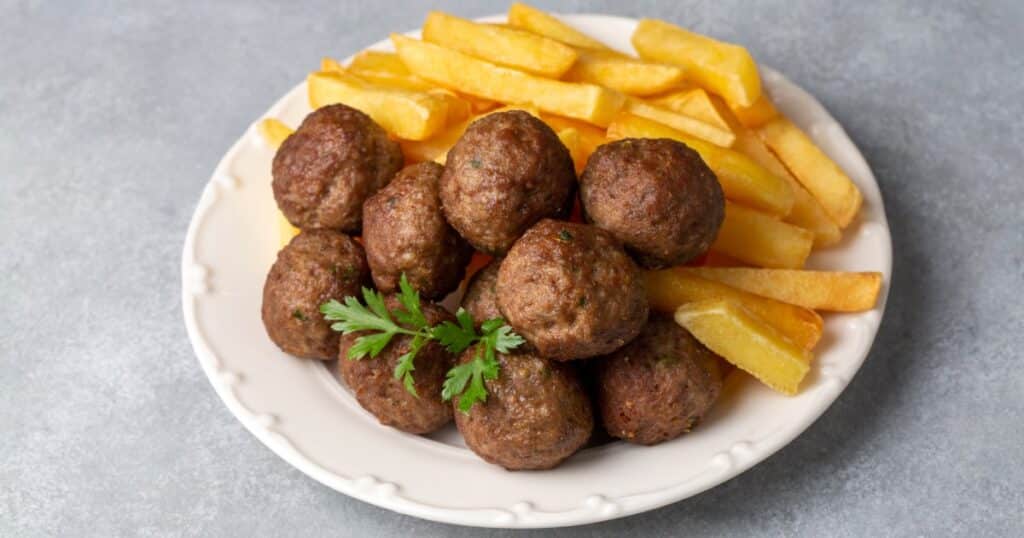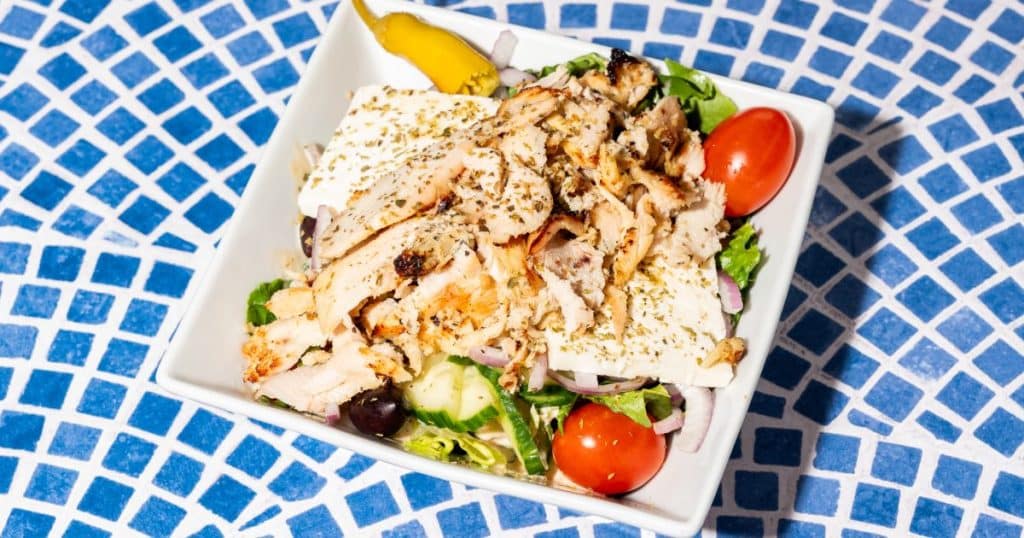Every culture has its version of the humble meatball, but few can compete with the fresh, herb-packed flavors of Greek keftedes. These aren’t your average meatballs drowned in sauce. Greek-style meatballs are lighter, zestier, and often served with refreshing sides like tzatziki, crisp vegetables, and warm pita bread.
In this blog, we’ll dive into what makes keftedes different from other meatball recipes. From the traditional spices used in Greek kitchens to the modern takes you’ll find in Canadian restaurants, we’ll show you why these Mediterranean bites stand out on any table.
Whether you’re a food lover or just curious about Greek cuisine, you’re about to discover what makes keftedes a true favorite.
What Are Greek Meatballs (Keftedes/Keftedakia)?

Greek meatballs, known as keftedes or keftedakia (for the smaller version), are a staple of traditional Greek cooking. They’re typically made with ground beef, though some home recipes and tavernas may mix in pork or lamb for extra flavor. What makes them unique is the vibrant blend of Mediterranean herbs, like oregano, mint, and parsley, combined with garlic, onion, and sometimes a touch of lemon zest for brightness.
Unlike many other meatball styles that are baked or stewed, keftedes are usually lightly fried. This cooking method creates a deliciously crispy exterior while keeping the inside juicy and flavorful. They’re often served as part of meze (small plates), paired with creamy tzatziki, crisp Greek salad, and warm pita bread, making them perfect for sharing or as a satisfying main meal.
Keftedes vs. Regular Meatballs: What’s the Difference?
Greek keftedes stand out from typical meatballs in a few key ways:
- Herb-Forward Flavor: While many meatball recipes focus on breadcrumbs and binding agents, keftedes highlight fresh herbs like oregano, mint, and parsley. This creates a lighter, fresher flavor profile.
- Fried, Not Boiled or Baked: Keftedes are traditionally fried in olive oil, giving them a golden, crispy crust, unlike boiled or heavily baked meatballs common in other cuisines.
- Lighter, Fresher Serving Style: Instead of being drowned in tomato sauce, keftedes are served with dips like tzatziki, fresh Greek salads, and pita bread, making them perfect for both appetizers and lighter main courses.
The Mediterranean Spice Blend Behind the Flavor
What makes Greek meatballs truly unforgettable is the rich yet balanced spice blend typical of Mediterranean cooking.
- Signature Herbs and Spices: Keftedes feature classic Mediterranean flavors, oregano for earthiness, mint for freshness, garlic for richness, and onion for a slight sweetness. Some recipes also incorporate a hint of cumin for warmth or a touch of cinnamon for subtle depth.
- Aromatic and Flavorful: This combination creates meatballs that are fragrant, savory, and vibrant, without feeling heavy. Every bite brings a light, zesty finish rather than overwhelming richness.
- Olive Oil Tradition: True to Greek culinary roots, keftedes are usually pan-fried in olive oil, which enhances the crispness while keeping the inside moist. Olive oil also remains on the table as a drizzle for serving, reinforcing the Mediterranean signature in every plate.
How Greek Restaurants in Canada Serve Meatballs
In Canada, Greek meatballs, keftedes or keftedakia, are a staple on many menus, especially in casual and fast-casual spots that focus on authentic Mediterranean flavors.
Street-Style Wraps: Many restaurants, like Souvlaki Authentique, offer options such as the Pita Telly, where keftedakia are served inside warm pita bread, accompanied by fresh veggies and creamy house-made tzatziki. This is ideal for those who enjoy a quick, filling handheld meal.
Generous Portions for Sharing: Another popular option is the Keftedakia 10 pcs, featuring lightly fried beef meatballs seasoned with Greek spices and served alongside a portion of tzatziki for dipping, perfect for sharing as a starter or for adding to a main meal.
Versatile Pairings: Beyond wraps and platters, keftedes are commonly offered as appetizers or sides, often paired with Greek salads, rice, or roasted potatoes, making them a flexible option for both solo meals and group dining experiences.
Why Keftedes Are a Versatile Greek Classic

Keftedes have earned their place as a true Greek classic because of their incredible versatility. Whether you’re planning a casual meal or a festive gathering, these meatballs adapt to almost any dining occasion.
- Perfect Appetizer or Starter: Lightly fried and packed with flavor, keftedes are ideal as an appetizer to kick off any Greek meal. Their crispy exterior and juicy interior make them an instant hit at the table.
- Quick and Satisfying Lunch: Wrapped in pita with fresh toppings and a dollop of tzatziki, keftedes make for a fast, protein-rich lunch that doesn’t feel heavy but still satisfies.
- Ideal for Sharing Platters: Their bite-sized form makes them a go-to for mezze or sharing platters, blending well with dips, veggies, and sides like Greek potatoes or rice.
- Balanced and Flexible Option: Whether you’re focusing on low-carb meals, high-protein intake, or simply looking for wholesome comfort food, keftedes offer a balanced choice, rich in protein, flavored with natural herbs, and easy to pair with lighter sides.
Conclusion
Greek keftedes are so much more than your typical meatball; they’re a celebration of fresh herbs, bold Mediterranean spices, and comforting flavors. Whether you enjoy them as a quick bite, a hearty meal, or part of a shared platter, keftedes bring together satisfaction and balance in every bite.
If you’re ready to experience these Greek favorites the right way, visit your nearest Souvlaki Authentique location. From juicy keftedakia plates to pita wraps packed with flavor, it’s the perfect stop to grab a delicious, satisfying bite.














